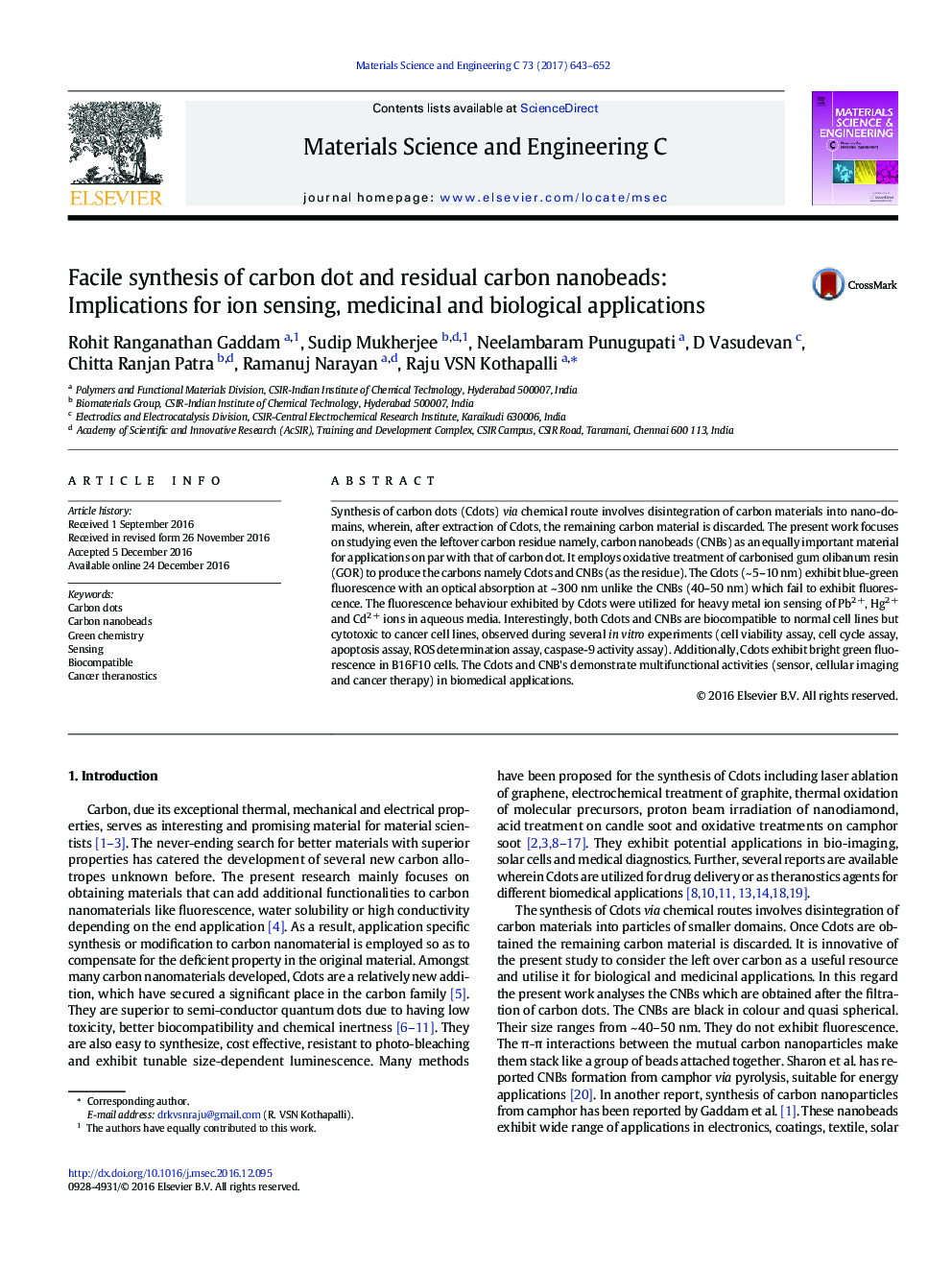| کد مقاله | کد نشریه | سال انتشار | مقاله انگلیسی | نسخه تمام متن |
|---|---|---|---|---|
| 5434971 | 1509148 | 2017 | 10 صفحه PDF | دانلود رایگان |
- Simultaneous preparation of carbon dots (Cdots) and carbon nanobeads (CNBs) from gum-olibanum resin.
- Both Cdots and CNBs are biocompatible in normal cells, increases its utility for various biomedical applications.
- Cdots shows excellent green fluorescence and can be used as cell imaging agent.
- Cdots and CNBs are both cytotoxic in different cancer cells, which can be utilized as potential anticancer agents.
Synthesis of carbon dots (Cdots) via chemical route involves disintegration of carbon materials into nano-domains, wherein, after extraction of Cdots, the remaining carbon material is discarded. The present work focuses on studying even the leftover carbon residue namely, carbon nanobeads (CNBs) as an equally important material for applications on par with that of carbon dot. It employs oxidative treatment of carbonised gum olibanum resin (GOR) to produce the carbons namely Cdots and CNBs (as the residue). The Cdots (~Â 5-10Â nm) exhibit blue-green fluorescence with an optical absorption at ~Â 300Â nm unlike the CNBs (40-50Â nm) which fail to exhibit fluorescence. The fluorescence behaviour exhibited by Cdots were utilized for heavy metal ion sensing of Pb2Â +, Hg2Â + and Cd2Â + ions in aqueous media. Interestingly, both Cdots and CNBs are biocompatible to normal cell lines but cytotoxic to cancer cell lines, observed during several in vitro experiments (cell viability assay, cell cycle assay, apoptosis assay, ROS determination assay, caspase-9 activity assay). Additionally, Cdots exhibit bright green fluorescence in B16F10 cells. The Cdots and CNB's demonstrate multifunctional activities (sensor, cellular imaging and cancer therapy) in biomedical applications.
Gum olibanum resin mediated green synthesis of carbon dots (Cdots) and carbon nanobeads (CNBs) can be used towards multifunctional applications in ion sensing, bio-imaging, drug delivery and anti-cancer activities.190
Journal: Materials Science and Engineering: C - Volume 73, 1 April 2017, Pages 643-652
